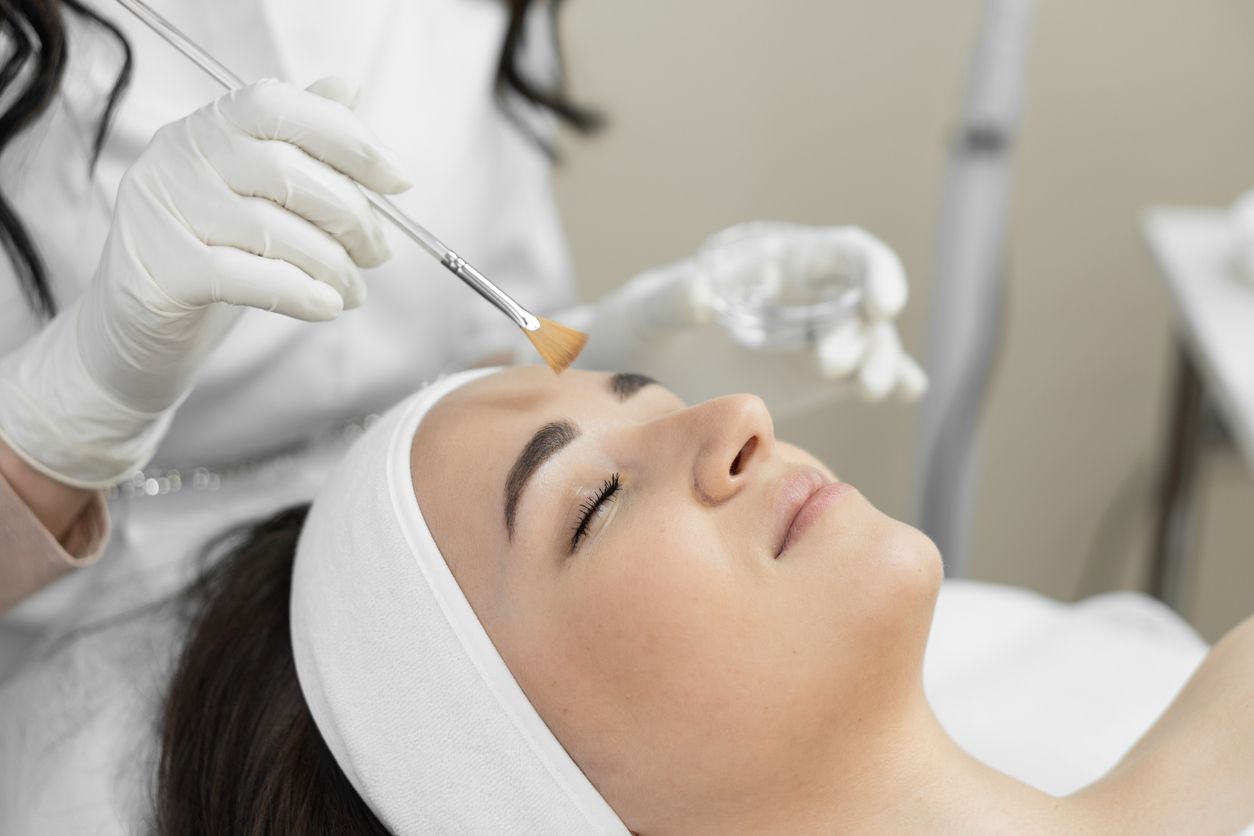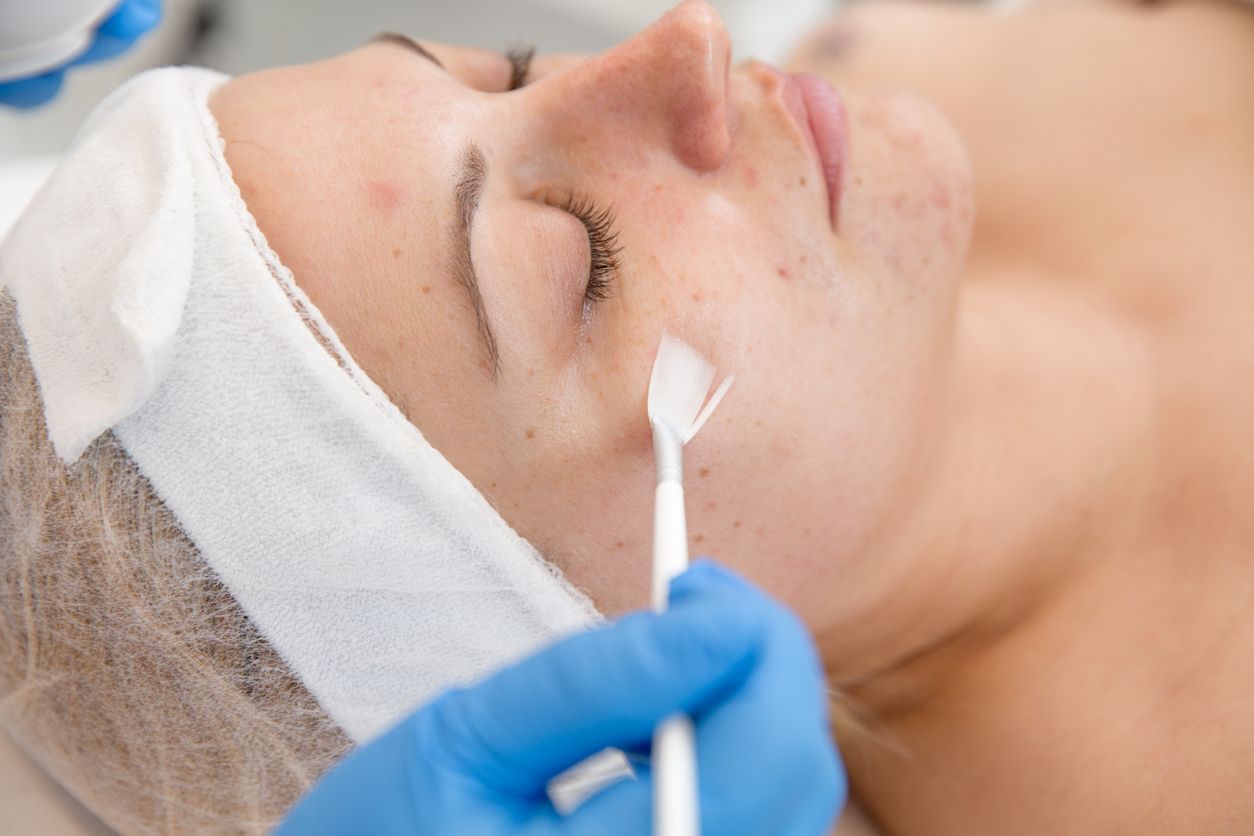- Home
- Trend
- Weight Loss Strategies
- Acne Tips
- Hair Health Information
- Blemish Removal Tips
- Acne Scar Removal Tips
- Muscle Building Techniques
- Intimate Care Tips
- Postpartum Intimate Care
- Eye Bags Wiki
- Tips for Face Slimming
- Secret of Permanent Hair Removal
- Breast Enlargement Tips
- Cure to Snoring
- Marionette Lines
- Skin-Tightening Secrets
Medical-grade AHA peels are professional chemical treatments designed to regulate the thickness of the stratum corneum (outermost skin layer). By using acidic compounds with specific chemical structures, they penetrate the superficial or mid-epidermis to resurface the skin—especially effective for managing oily skin and promoting a smoother, brighter complexion. Studies have shown that alpha hydroxy acids (AHAs) not only speed up the shedding of dead skin cells and fade pigmentation, but also boost hyaluronic acid levels in the skin. With a wide range of aesthetic benefits, AHA peels have gained popularity among beauty enthusiasts. Before trying this chemical exfoliation method to refine your skin texture, let’s break down the acid types and their 4 key skincare benefits to see just how powerful this treatment really is!
The 4 Key Benefits of Medical-Grade AHA Peels: Smoother Skin Is Just the Start!

1. Treats Acne and Blemishes
AHAs can penetrate deep into pores to dissolve excess sebum and dead skin buildup, unclogging pores and preventing the formation of pimples and blackheads. With anti-bacterial and anti-inflammatory properties, AHAs are particularly effective in improving mild to moderate acne.
2. Minimizes Enlarged Pores
Enlarged pores are often caused by clogged debris or loss of collagen. AHAs help clear out impurities and stimulate collagen production, tightening the skin around the pores and reducing their appearance.
3. Fades Pigmentation
Sun exposure, acne, and inflammation can all lead to pigmentation and uneven skin tone. AHAs speed up melanin turnover, helping fade dark spots and post-acne marks, leaving the complexion more even and radiant.
4. Improves Overall Skin Texture
By removing dead, aging skin cells, AHAs leave the surface of the skin smoother and softer to the touch. They also promote skin cell renewal, brighten dull skin, and enhance overall glow.
Medical AHA Peel Treatment Explained: Understand the 7-Step Process in One Go

Pre-Treatment Consultation
Before starting an AHA peel, a dermatologist will assess your skin condition and concerns, then create a customized treatment plan based on your goals.
7-Step Treatment Process
A typical AHA peel follows these steps:
1. Cleansing – Thoroughly cleanse the skin to remove oils and impurities.
2. Protection – Apply petroleum jelly to sensitive areas (eyes, lips) to protect them from the acid.
3. Application – The doctor selects the appropriate type and concentration of AHA for your skin and evenly applies it.
4. Waiting Period – Leave the acid on for several minutes, depending on skin response.
5. Neutralization – Apply a neutralizing agent to stop the acid’s action.
6. Rinse – Remove any remaining acid and neutralizer.
7. Hydration – Apply a moisturizing product to soothe and hydrate the skin.
Treatment Duration and Frequency
Each session lasts about 30 to 60 minutes. Frequency depends on your skin condition and desired results—generally, one session every 2 to 4 weeks, with 4 to 6 sessions recommended.
免費體驗
Acne Treatment
1 Minute Self-Registration
Date should not be before minimal date
Beauty Isn’t Worth the Risk: Know the Potential Side Effects of AHA Peels
Common Side Effects
• Redness and Swelling – Mild irritation may appear post-treatment, but usually fades within hours or a few days.
• Peeling – Skin may peel as dead cells shed, ranging from light flaking to more visible peeling and possible scabbing.
• Dryness – AHAs can strip surface moisture, making post-treatment hydration crucial.
• Itching – Peeling skin can feel itchy, but avoid scratching to prevent infection.
Rare Side Effects
• Hyperpigmentation – If aftercare is poor or skin is overstimulated, dark spots may develop.
• Scarring – Rare, but can occur if too strong an acid is used or the procedure is poorly done.
To minimize risks, follow your doctor's aftercare instructions closely and choose a reputable clinic with experienced professionals.
5 Essential Aftercare Tips to Prevent Side Effects After an AHA Peel
1. Hydrate
Post-peel skin tends to be dry—use moisturizers containing hyaluronic acid or ceramides to lock in moisture and restore the skin barrier.
2. Sun Protection
Skin is more sun-sensitive after a peel, so strict UV protection is vital. Use a broad-spectrum sunscreen (SPF 30+ and PA+++) and reapply every 2–3 hours.
3. Gentle Cleansing
Avoid exfoliants, alcohol-based toners, or harsh cleansers. Use a mild, non-stripping face wash to clean your skin gently.
4. Avoid Irritants
Skip whitening, exfoliating, or high-intensity aesthetic treatments (like lasers or microneedling) during the healing period to avoid irritation.
5. Follow-Up Visits
Attend scheduled follow-ups so your doctor can monitor your skin and adjust your treatment plan if needed.
Think AHA Peels Are Outdated? Try the Painless and Non-Invasive Perfect Medical Acne Treatment for Skin Renewal and Oil Control!
Concerned about the risks of AHA peels? Consider a gentler alternative: the Perfect Medical Acne Treatment! Whether you have oily, sensitive, or blemish-prone skin—this low-risk treatment can help with acne, acne marks, blackheads, whiteheads, uneven texture, enlarged pores, dehydration, and dullness.
Using cutting-edge dual-spiral suction drainage and vacuum dermabrasion, the Perfect Medical Acne Treatment gently removes dead skin cells, leaving the skin smoother. The deep cleansing also helps regulate oil production and balance moisture, reducing the chances of future breakouts. Register now for a full experience, including a professional skin analysis + the Perfect Medical Acne Treatment!
Book Now: Acne Treatment免費體驗
Acne Treatment
1 Minute Self-Registration
Date should not be before minimal date
FAQ

How often can I get a medical-grade AHA peel?
It varies based on individual skin conditions, but most clinics recommend treatments every 2 to 4 weeks.
What types of AHAs are commonly used?
Glycolic acid, malic acid, and mandelic acid are the most common.
Is salicylic acid the same as AHA?
No, salicylic acid is a BHA (beta hydroxy acid), whereas AHAs are alpha hydroxy acids.
How does an AHA peel improve skin texture?
AHAs help shed the outermost layer of dead skin while locking in dermal moisture and stimulating collagen production.
Are there side effects with AHA peels?
Reactions vary. Some may experience scabbing or peeling, while others may develop more intense symptoms depending on sensitivity.









